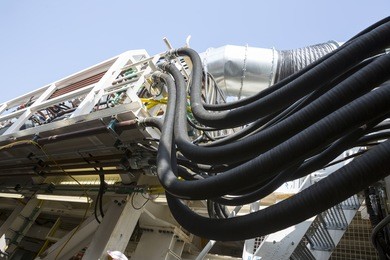Composition and Composition of Downhole Hoses for Oil Drilling Applications
Composition and Composition of Downhole Hoses for Oil Drilling Applications
Composition and composition of downhole hoses for oil drilling
There is a huge demand in the oil industry for downhole hoses to be used in completion, fracturing, and exploration. These hoses are designed to transport various types of fluids from the surface to the well bore, including water, sand, and mud. Choosing the correct type of hose for each application requires careful consideration of the chemicals, pressures and other environmental conditions.
Typical requirements for a downhole hose include high performance at pressure, temperature and environmental conditions as well as resistance to abrasion, oils, weather, aging and ozone. The hose is made from a variety of rubber and synthetic materials to achieve these properties.
Hydraulic hoses are used to transfer hydraulic fluids such as water, oil and glycol-based liquids. They can also be used to transport compressed gases like nitrogen and air. These hoses are resistant to abrasion, hot air and temperatures that can go beyond 400degF. They are also resistant against chemical exposure, corrosive chemicals, and ultraviolet (UV), radiation.
Drilling hoses are primarily composed of several successively stacked rubber layers and a metal braid. The base layer is an internal rubber tube and the next two or eight layers are textile braiding and power metal braid. These layers are then bonded using a coiling process, which makes them strong enough to withstand high pressure environments.

A hose is usually made from a mixture that includes a rubber compounding additive, a curing agent, and filler. The hose composition can be extruded or molded, or braided.
Rubber compounding additives can contain low molecular weight polyethylene, waxes, fatty acid, and other natural compounds. The curing agent is a copolymer containing halogens of a C4-C7 isomonoolefin, a para-alkylstyrene and a C4-C7 isomonoolefin. At least 5 weight percent of this moiety must be present in the rubber compounding additives.
Suitable halogen-containing copolymers may have a halogen content ranging from about 0.4 to 1.0 mole percent. Bromine, chlorine, and/or mixtures of these halogens can be used.
A rubber compounding additive, pigment, or rubber processing oil could also be part of the hose. Paraffinic and naphthenic oils are suitable rubber process oils. Other rubber compounding additives may be antioxidants, stabilizers, amine condensation products, and the like.
A halogen-containing rubber compounding additive is preferable to a non-halogen containing rubber compounding additive. The halogen-containing rubber compounding additives have improved fire resistance, low smoke production, low toxicity, and processing capabilities to meet the stringent performance requirements of a downhole pipe.
These characteristics are crucial to the safety and efficiency of downhole pipes. They prevent damage to hoses and allow for higher pressures and temperatures that are required for many oil drilling operations.
Generally, a downhole hose should be able to withstand up to ten times its working pressure, or more, when subjected to a test. This is because of the fact that the hose is exposed to a large amount of stress. The stress and the pressures from the downhole operation can cause the hose's degrading or breaking.






Leave Your Product Requirements
Your email address will not be published. Required fields are marked *
Inquiry
Please fill in your name and your message and do not forget mail and/or phone if you like to be contacted. We will reply in 24 hours.